How Fulham’s organisation in midfield earned a 2-2 draw with Liverpool
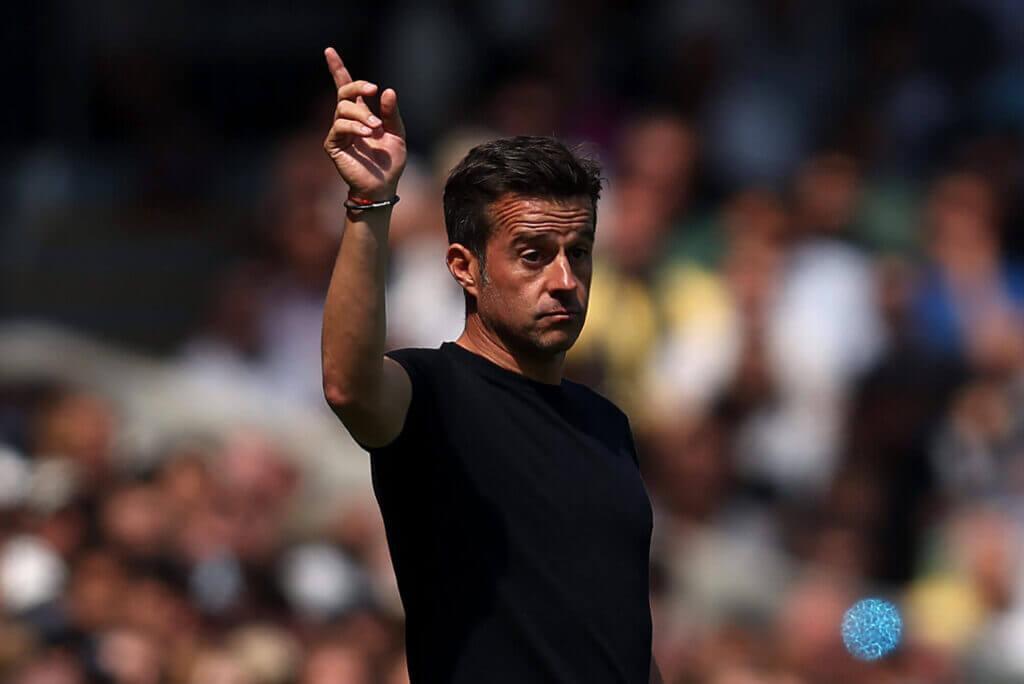
2
After watching his team claim a point on the opening day against Liverpool, Marco Silva described Fulham’s first-half performance as near perfection without the ball.
“In terms of organisation, our first half was almost perfect,” he said. “The way we blocked almost everything from them, the way we started a game, the intensity that we played, was really good.
“We know they have the individual quality and create spaces and chances. But in the first half, in some moments, we had 30 to 40 metres (of space) behind us. We know the way they attack the space, how they are aggressive when they attack the space. But we controlled it well.”
Fulham did not deviate too much from the tactical set-up that brought so much joy in the Championship last season. In possession, they set up in their 4-3-3 shape, with Andreas Pereira drifting forward as more of a No 10 than a No 8 to get closer to Aleksandar Mitrovic. But what stood out was their discipline out of possession, in a compact 4-4-2.
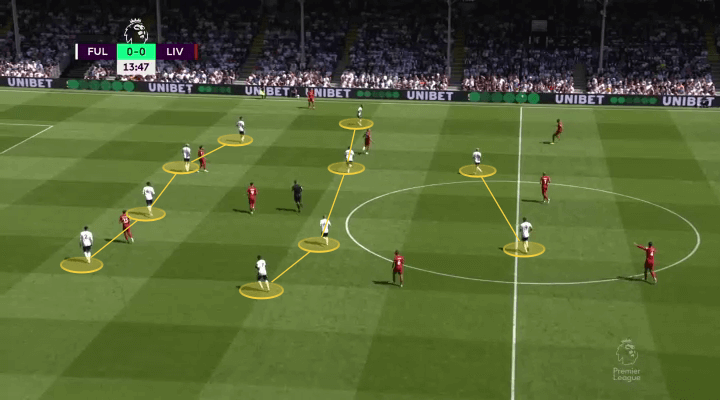
This was not a new thing; Fulham adopted this shape throughout last year and it was evident against Villarreal last week in the club’s final pre-season friendly. But rarely has it been tested like it was on Saturday.
Throughout the summer, the sense at Fulham has been that Silva would not change much, if anything, about the team’s playing style. Indeed, preparations for Saturday were no different to any game last season.
“There was nothing different at all,” defender Tim Ream said after the game. “We knew from our structure last year — everybody knew what we wanted to do. And that’s to press. Yes, we knew there were going to be times we couldn’t do that. But for the most part, it was, ‘Let’s get in their faces and be aggressive and see what happens’. At the end of the day, you do that, you put the other team on their heels and all of a sudden the game changes. You saw that today.”
Fulham pressed aggressively with a high defensive line and made Liverpool struggle with their build-up play. This was highlighted by several metrics, as neatly summarised here by markrstats on Twitter, who compared Liverpool’s in-game numbers to their average across last season.
By half-time, while they did strike the post, Liverpool had only created chances worth 0.11 expected goals (xG). Only Manchester City managed better than that in a single half of football against Liverpool last season, conceding 0.05xG in the first half of their contest in October 2021.
“Fulham defended in a 4-4-2, it is a really good system,” said Jurgen Klopp. “They realised that, especially when the opponent is not playing quick enough, they can always (use) the winger, the No 8 and the striker in a situation when you pass the ball to the outside — it’s a pressing trigger.”
This happened frequently in the first half. Fulham’s plan was to stop the ball moving through Liverpool’s defensive midfielder, namely Fabinho. In turn, they pressed aggressively once the ball moved to the visitor’s full-backs, Trent Alexander-Arnold and Andy Robertson, and then again in central areas, with Harrison Reed and Joao Palhinha reducing any time that Jordan Henderson or Thiago had in possession.
To stop Fabinho, Andreas Pereira and Aleksandar Mitrovic blocked off the passing lanes into him.
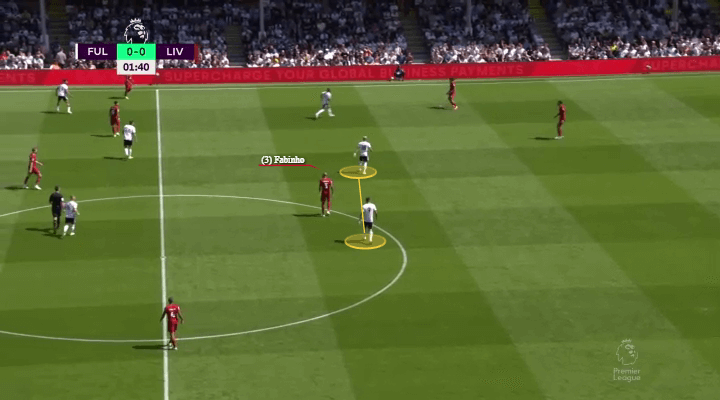
They would then assist the press once it moved to either Alexander-Arnold…
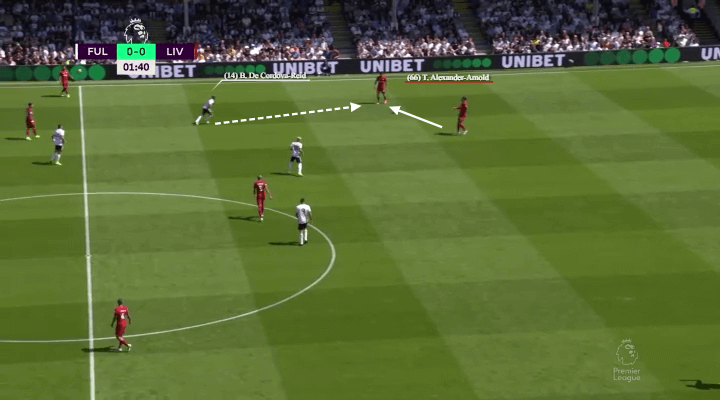
… or Andy Robertson, with Bobby Decordova-Reid and Neeskens Kebano the first movers.
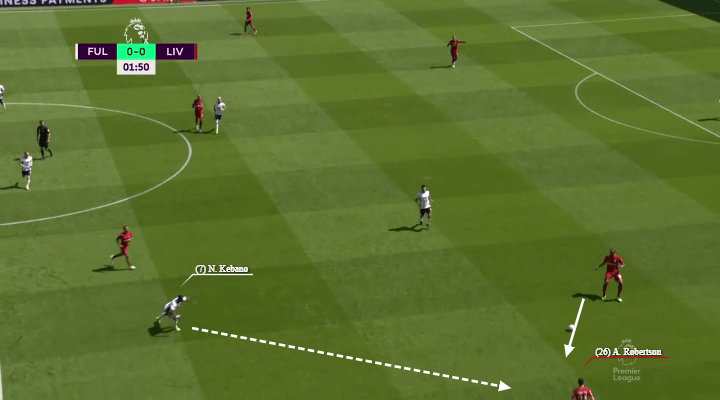
For this to work, Fulham had to press effectively and work as a collective. The 4-4-2 set-up is zonal and maintaining good space between defenders is key to preventing line-breaking passes. So, when Decordova-Reid stepped forward to press, Kebano would tuck in on the opposite flank to pick up a central midfielder, and vice versa. This meant the pair had to cover a lot of ground.
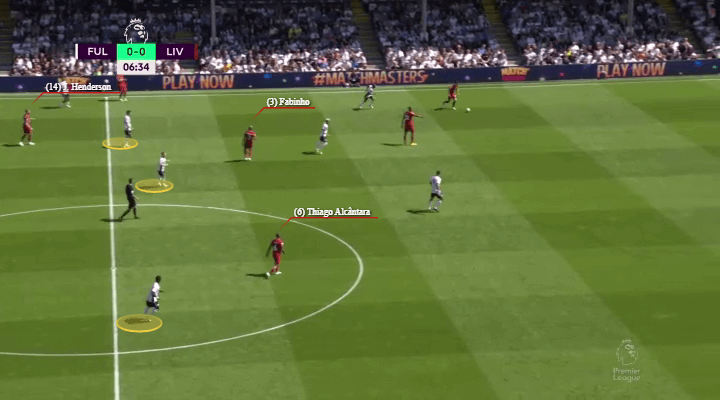
This image below, featuring Decordova-Reid following Jordan Henderson from the left flank to the right flank, reflects the compact nature of Fulham’s approach. You can also see the team’s high line, again helping to condense space during Liverpool’s build-up.
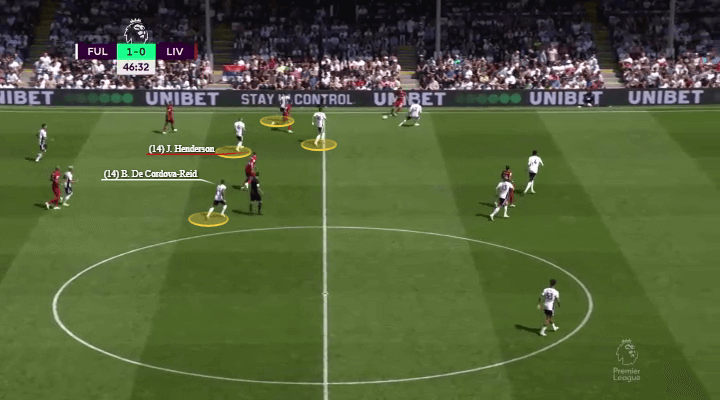
In central areas, Reed and Palhinha would also block off central passing lanes — important for when Roberto Firmino tried to drop into midfield to create an overload — as well as harry their opposite numbers.
In this example, you can see the number of bodies Fulham move around the ball, tightening the net, while Reed presses Thiago and nicks the ball off him.
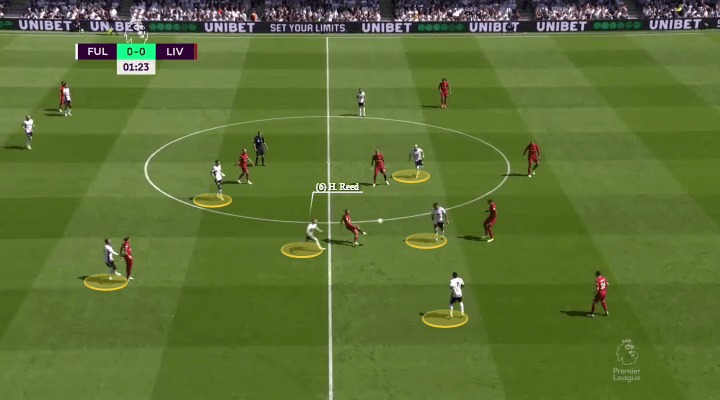
Palhinha, signed from Sporting Lisbon for £17.2million ($20.8m), was outstanding, an aggressive disruptor and a human shield for the back four. Very little made it past him.
If Liverpool tried to go direct and exploit the space behind and around the sides of Fulham, Silva’s two full-backs were quick enough to cover the ground and meet the threat.

Antonee Robinson arguably had his best defensive performance in a Fulham shirt against Mohamed Salah on the Liverpool right-hand side. He did not give the Egyptian forward a moment’s peace and shadowed him doggedly, a key aspect to the way Fulham approached the game. Both wingers, on either flank, were man-marked. Here, Robinson pushes Salah back into his own half, who then has to drop the ball back to Joel Matip.

On the other side, Kenny Tete kept Luis Diaz quiet, too, a task he accomplished despite receiving a booking 17 minutes in.
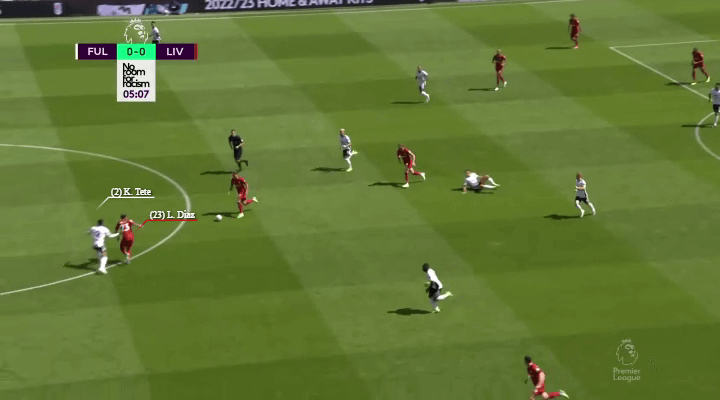
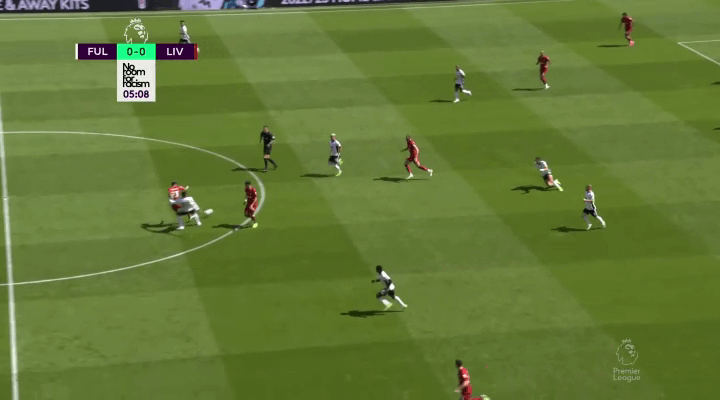
Fulham were helped by the fact Liverpool’s passing was off-kilter. Normally when faced with a compact block that is difficult to play through, Liverpool use the passing range of Virgil van Dijk, Trent Alexander-Arnold or their central midfielders to shift the block. They struggled here, with too many intercepted or misplaced passes. This was partly to do with Fulham’s pressing and the full-backs’ ability to cover the ground to deal with the switch of play. But it was also just poor quality on the ball.
The yellow lines here reflect failed passes, while the black ones show successful ones.
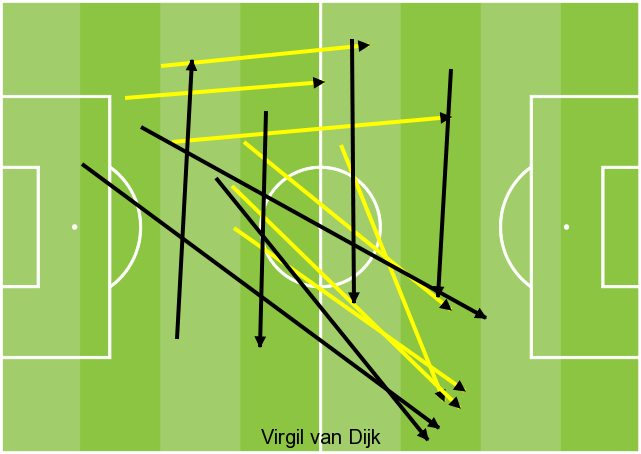

Fulham also outfought Liverpool. They won more duels (65 to 31) and more aerial duels (23 to 13). The latter was a targeted approach by Fulham. Rather than playing out from the back, which would be Fulham’s go-to start to a build-up sequence, goalkeeper Marek Rodak preferred to go long and seek out Mitrovic, who was a handful for the Liverpool defence. No player played more passes into the opposition’s final third for Fulham than Rodak (9).
In the second half, Liverpool took greater control of the contest. “In the second half, we knew Liverpool would come with more pressure,” Palhinha said after the game. Several factors contributed.
Fulham’s approach was both physically and mentally draining and they were unable to maintain the same intensity as the game progressed, particularly with the substitutions. Liverpool made four changes overall, three of which were before the hour mark, while Fulham shuffled the pack just once before the 89th minute. One of those substitutes, Darwin Nunez, changed the impetus of Liverpool’s attack, with Salah now operating in wider areas and Nunez’s runs across the near post causing problems for Fulham. He gave the visitors more of an outlet.
Overall, though, they still only managed to create 1.23xG, per Opta. Again, only Manchester City managed to stop Liverpool’s attack to a greater extent last season, conceding 0.78xG and 1.19xG in their two contests.
It was a very encouraging display from Fulham, the type that will cement confidence in their approach play in the coming weeks.
“It will give us the trust in our process, in our philosophy as well,” said Silva. “Even if inside this football club we (already) believe in ourselves.”
